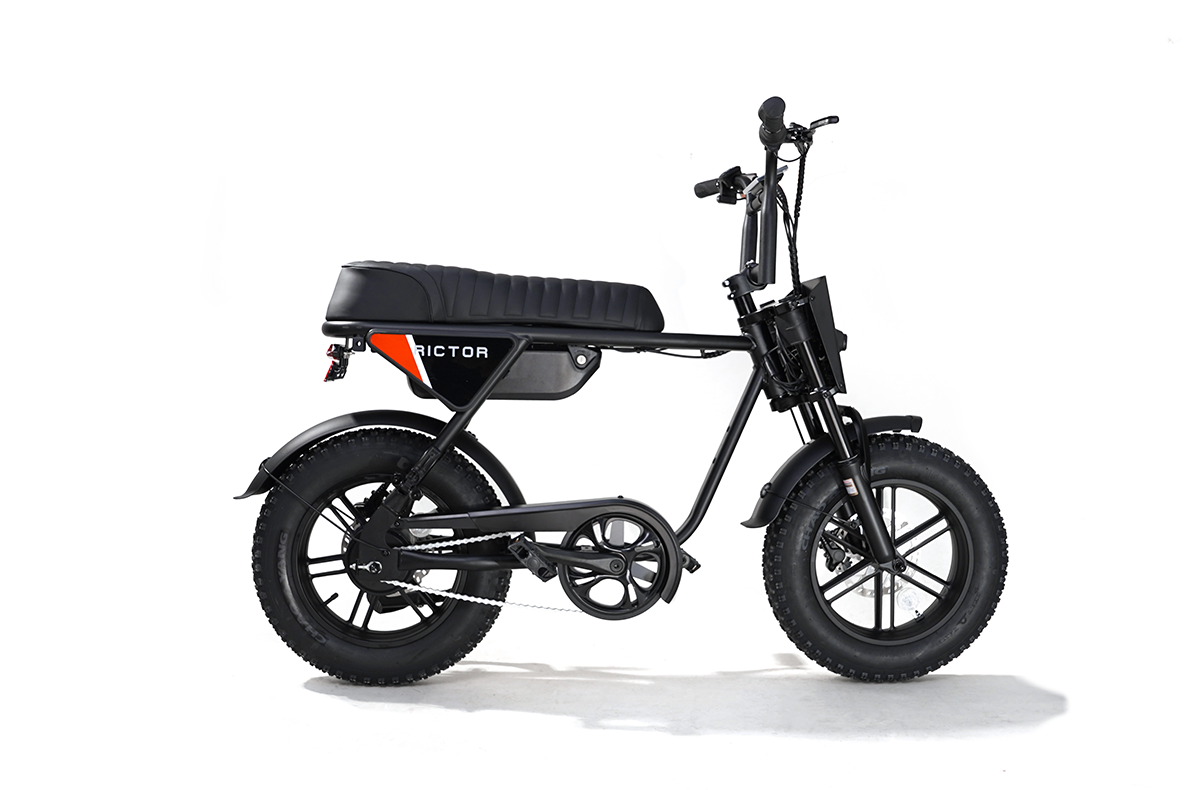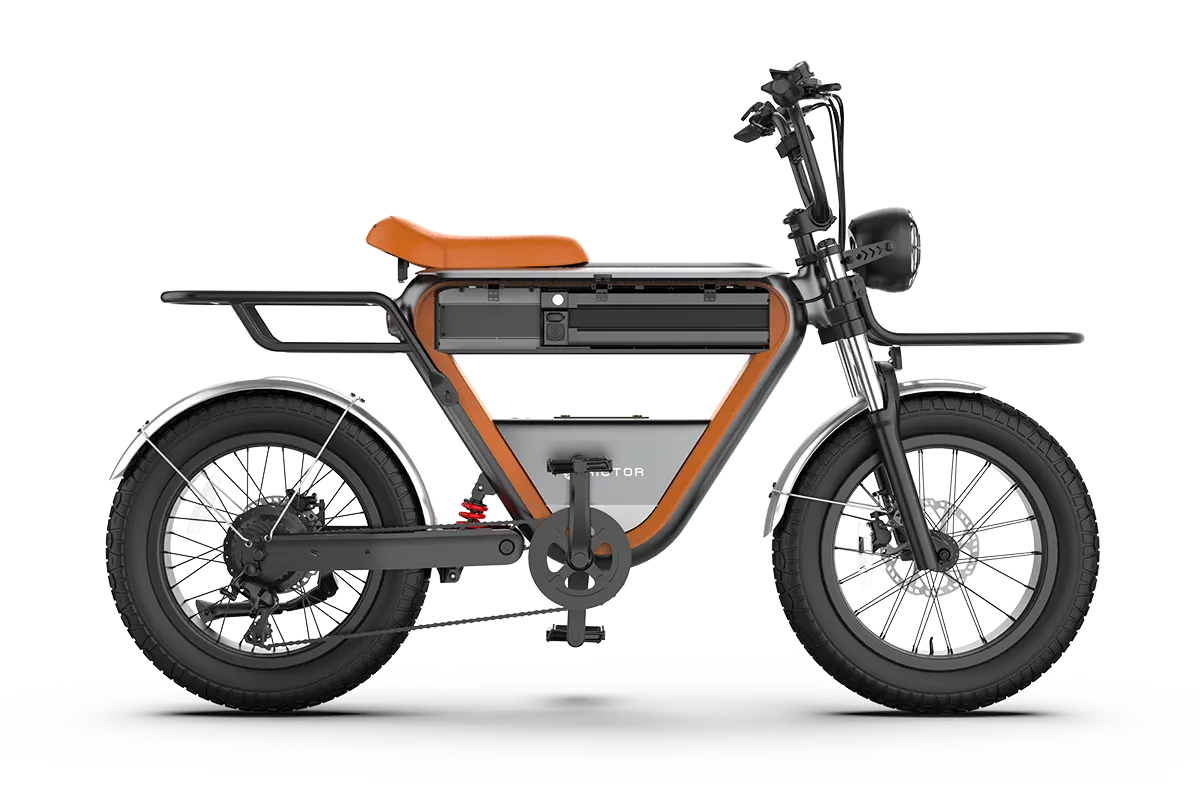
Are E-Bikes Waterproof? Here’s How Waterproof They Really Are
Let’s be real—nobody wants to risk frying their bike’s battery or motor over a few raindrops.
So, are electric bikes waterproof?
Well, kinda. Let’s break it all down so you know exactly what to do when the sky decides to pour.
Are Electric Bikes Waterproof
Most electric bikes aren’t really waterproof—they’re just water-resistant.
What’s the difference?
Water resistant means they can handle some splashes or light rain, but don’t expect them to be invincible.
Think of it like your phone—it’s fine with a few drops, but you’re not about to throw it in a pool, right?
Water Resistant vs. Waterproof
Your electric bike’s “water-resistant,” which basically means it can handle the usual light rain or a couple of splashes.
But if you leave it out in a downpour or decide to ride through a big puddle, you’re taking a big risk.
Sure, the battery and motor are sealed, but they’re not perfectly sealed.
Water can still find its way in, especially over time.
And when it does, you’re looking at some potentially expensive repairs (or worse, a busted e-bike).
How Much Water Can Your E-bike Handle
An IP (Ingress Protection) rating is a standardized measure of how well your e-bike’s components are sealed against dust and water.
The rating includes two numbers: the first represents protection against solid particles like dust, and the second is about water resistance.
An IP rating of IP65 or IP66 would indicate decent protection against dust and the ability to withstand light rain or splashes.
The higher the second number, the better it’s designed to resist water intrusion.
-
IPX4 – An IPX4-rated electric bike can withstand splashes from any direction, so it’s okay with occasional light rain but not suited for extended exposure.
-
IPX5 – IPX5 e-bikes can handle low pressure water jets, which means they’re better equipped for moderate rain. This level of protection should cover you for normal rainy conditions without risking water getting into the motor or battery.
-
IPX6 – With an IPX6 rating, your e-bike can stand up to higher-pressure water jets, so it’s safe in heavy rain and offers more robust protection against water. However, it’s still not designed for long-term immersion in water.
-
IPX7 – IPX7-rated e-bikes can be submerged in water up to one meter deep for short periods (usually up to 30 minutes).While this level handles occasional deep water contact, it’s not meant for regular use in very wet environments or underwater situations.
If you live in an area where it rains frequently, or if your rides are often in damp conditions, an e-bike with an IPX5 or IPX6 water-resistance rating is ideal.
No electric bike is fully waterproof. These ratings mean it can handle rain but not full-on immersion or constant exposure to high-pressure water.

SEE ALSO Riding in Wet Weather? Be careful, it can damage your bike!
Which Electric Bike Best Wateproof
With its IP65 waterproof rating, Rictor K1 electric bike can stand up to wet conditions without fuss.
While most e-bikes can manage light rain, the RICTOR K1 has some added protection on essential parts, so you don’t have to worry as much about the weather.
The RICTOR K1 also has a display that's more water-resistant than what you’ll find on most other e-bikes.
It’s designed to stay clear and readable even in wet conditions.
Plus, the wheel hubs and wiring are sealed to keep water out, which means you can rely on it to get you through unexpected showers.
With the RICTOR K1, you’re getting a bike that’s built to be reliable, rain or shine.
What’s Safe and What’s Not In Riding In the Rain
So, can you ride your e-bike in the rain? The short answer: yes, you can!
Light Rain? Go Ahead. Heavy Rain? Maybe Skip It.
A little drizzle? No problem—your e-bike can handle it, and so can you with the right gear.
A steady rain might be fine too, as long as your e-bike has some water resistance (think IPX5 or higher).
But if it’s a heavy downpour, consider waiting it out.
When it’s really coming down, water has a way of sneaking into places it shouldn’t, like the motor or battery, especially if you’re riding for a while.
Even with a water-resistant bike, prolonged exposure to heavy rain can lead to corrosion or electrical issues.
So, for peace of mind (and fewer repair bills), it’s best to avoid riding in intense rain unless absolutely necessary.
Wet Roads Can Get Slippery
Rain mixed with oil, dirt, and grime on the road can create a super slick surface, which makes it harder to control your bike.
Watch out for especially slick areas, like painted road markings, metal manhole covers, or railroad tracks.
Even fallen leaves can be a hazard when they’re wet—they turn into little slip traps for your wheels.
Take it slow, avoid sharp turns, and brake gradually to keep control. Sudden stops or quick turns increase your chances of skidding, which can lead to an unexpected fall.
Stay Visible
Rain reduces visibility for everyone, not just you.
Drivers and other riders might have a harder time spotting you, so you want to stand out.
This is the time to light up!
Use bright front and rear lights on your e-bike and, if possible, add a flashing light for extra attention.
Reflective gear can make a big difference too—consider wearing a reflective jacket or vest and reflective tape on your helmet.
If the rain’s in your eyes, a helmet visor or clear glasses can help you see better and protect your eyes from rain spray.
Battery and Charging Tips in Wet Weather
Dry It Off, ASAP
Don’t just let it air dry, or you’re setting it up for rust and maybe even electrical problems.
Grab a towel and wipe down the battery, motor, and display. You’re saving yourself future headaches by doing this.
Dry the Battery
Water and electronics aren’t friends, so make sure your battery’s completely dry before plugging it in.
A damp connection can lead to short circuits or even fires. Yup, it’s that serious.
Winter Pro Tips
Rain plus cold weather?
Now you’re really putting your e-bike to the test. Lower tire pressure gives you better traction, and disc brakes (if you have them) are more reliable than rim brakes when things get wet.
Go a little slower and brake earlier to stay in control.
Store It Somewhere Dry
If you can, bring it inside.
If not, a waterproof cover is a must. Rain’s one thing, but constant exposure to dampness or humidity is just asking for rust.
Avoid the High-Pressure Wash
High-pressure spray can push water right into those “sealed” areas. Just stick to a damp cloth or gentle brush. Slow and steady.
FAQs
Can I ride my e-bike in heavy rain?
It depends on your e-bike’s water resistance rating. If it has a higher IP rating, it can handle rain better, but it’s still a good idea to avoid heavy rain to protect sensitive components like the motor and battery.
What does an IP65 waterproof rating mean for an e-bike?
An IP65 rating means the e-bike is protected from dust and low-pressure water jets from any direction. It’s a good standard for riding in moderate rain but doesn’t mean it can handle heavy, prolonged exposure to water or submersion.
How can I protect my e-bike’s display from rain damage?
Some e-bike displays come with enhanced waterproofing, but if not, you can cover the display with a clear waterproof cover to keep it visible and safe from rain damage.




